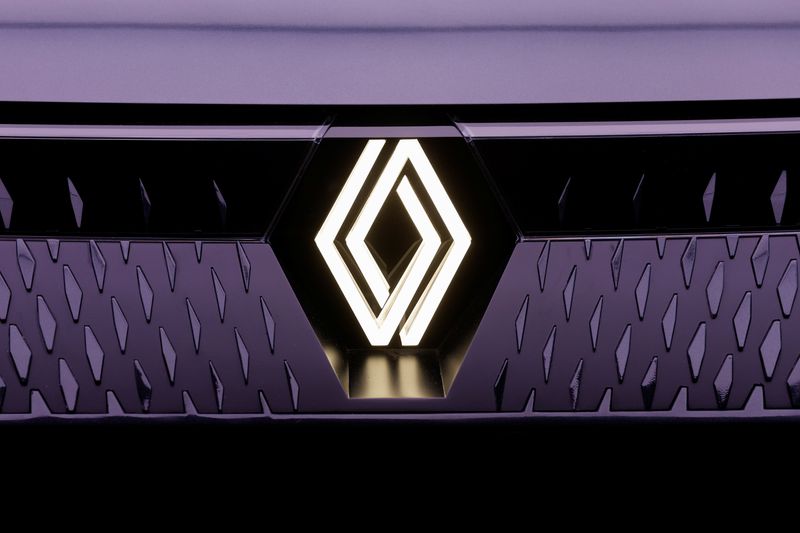PARIS (Reuters) - French car maker Renault (EPA:RENA) on Wednesday officially launched its electric vehicle unit Ampere, which was carved out from Renault's other operations on Nov. 1.
Having pioneered the market for first-generation electric vehicles with its long-time ally Nissan (OTC:NSANY) in the early 2010s, Renault has recently fallen behind pure players like Tesla (NASDAQ:TSLA) and Chinese manufacturers as global competition for greener vehicles has picked up.
Here's what you need to know about Ampere, a major plank of Renault's turnaround strategy, which is poised for a market listing next year.
CUTTING COSTS Ampere says it employs over 11,000 people, a third of whom are engineers, and aims to become a European leader in the EV market both for technology and the competitiveness of its cars.
To ward off increased competition from cheaper Chinese EVs Ampere aims to reduce by 40% the cost of manufacturing cars through 2027 and beyond, by offering fewer models and cutting costs at the conception and production stage.
It also aims to reduce the time needed to produce an EV to less than 10 hours.
The company forecasts an annual revenue increase of 30% through 2030 - compared with the less than 8% Renault recorded over the last quarter.
Ampere's operating result and cash flow should break even in 2025, according to the company that also guided towards a double-digit operating profit margin by 2030.
IPO PLANS A stockmarket listing of Ampere, initially expected for this year, but now in the first half of 2024, aims to extract more value from the business by giving investors more visibility on its operations and separating it from the combustion engine business, called Horse.
Renault CEO Luca de Meo has said Ampere could achieve a valuation of 8 to 10 billion euros, but UBS analysts give Ampere a value of just 3-4 billion euros and others have questioned the rationale for carving out the business.
Renault will hold an investor day on Ampere on Nov. 15.

INVESTMENT PARTNERS Nissan has committed to invest up to 600 million euros in Ampere, and Mitsubishi, also a partner in the Franco-Japanese alliance, up to 200 million euros. Chip-maker Qualcomm (NASDAQ:QCOM) is also expected to invest in Ampere. On top of those deals, Renault aims to float around 20% of Ampere's capital, and will keep owning between 60% and 70% of the business.
ONE MILLION CARS BY 2031 Ampere has three factories in northern France. It will purchase batteries for its cars from Chinese-Japanese maker AESC Envision and French start-up Verkor, which both have gigafactories near Ampere's plants. Ampere targets production capacity of 400,000 EVs at the beginning, versus less than 50,000 electric Renault Megane and Kangoo vehicles sold last year. Output should reach 600,000 in 2026 and one million in 2031. Ampere plans to offer six EV models by 2030, including its existing Megane E-Tech, and a relaunched version of Renault's former mini hatchback, the R5, due to be launched next year. With its current line-up, Renault said it was the third biggest seller of EVs in Europe in 2022, behind Tesla and Volkswagen (ETR:VOWG_p).